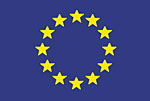EUHYFISDevelopment of a Hydrogen Filling StationThe use of hydrogen as vehicle fuel has only ecological advantages when it is produced from renewable energies. Otherwise there will be nothing else than a relocation of the CO2-emissions from the exhaust of the vehicle to the production place of the hydrogen. Although even this might imply some benefits for the environment, these would surely not justify the enormous technical and financial effort necessary for the change from petrol to hydrogen. The aim of EUHYFIS (EUropean HYdrogen Filling Station) was to set up a filling station that is supplied with hydrogen generated and stored locally from "green" sources. On the one hand, components needed to be adjusted, on the other hand an entire integrated system needed to be developed. Part of the component adjustment process was the modification of a natural gas-compressor for the compression of the hydrogen as well as the optimisation of an electrolyser in regard to energy efficiency and its robustness towards fluctuations of power input, as typical for wind and solar energy. Other tasks included the consideration of safety requirements in different EU member states, the modelling and the optimisation of the system, and the definition of the ecological benefits of hydrogen over petrol (eco-efficiency analysis). PLANET's rolePLANET had the initial idea for this project. In 1997 when we were preparing a study on low-emission bus-engines for the isle of Norderney (Germany) we created the first concept for EUHYFIS, at a time when neither fuel cell buses nor any supply of hydrogen from renewable sources existed. We sought and found suitable partners for the project, including Bauer Compressors (Munich, Germany), the German market leader in natural gas fuelling stations, and Casale Chemicals (Lugano, Switzerland) with great experience in development and construction of electrolysers. The accompanying research companies were selected and the proposal written in detail. The European Commission agreed on funding from the CRAFT-programme for SME at the end of 1998. PLANET was the project leader. Another element of the project was the preparation of subsequent demonstration projects. However, it became obvious that higher pressures for filling of the hydrogen-driven vehicles would be required in the future to accomplish a higher range. The new provisional standard should be 350 bar, and 700 bar on a long-term. The concept of EUHYFIS, though, only allowed for a maximum pressure of 300 bar, similar to natural gas systems, and thus it was agreed by the partners to not develop the system any further due to limited chances on the market. With the experiences from EUHYFIS, PLANET contributes to the project CUTE and to its follow-up HyFLEET:CUTE, respectively. |
Publications on the project R. Steinberger-Wilckens, K. Stolzenburg [EUHYFIS- Results of the Research and Development Phase, Contribution to the 8th symposium on the use of renewable energies, University of Applied Sciences Stralsund, Germany, November 2000] R. Steinberger-Wilckens, K. Stolzenburg
Key Figures Five small and medium enterprises (SME) plus five research companies were involved in this project. It started in January 1999 and ended successfully in April 2000. The European Union funded this project under its 4. Framework Programme (contract no. JOE-CT98-7043). More information about the project (last update 2002) can be found on: www.euhyfis.com. |
|
|

|
